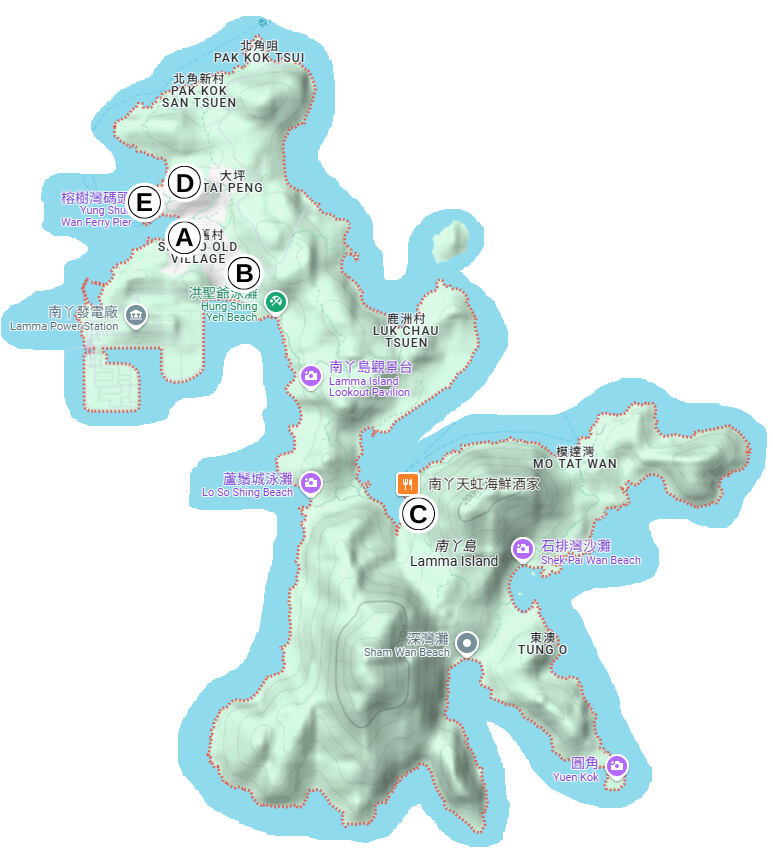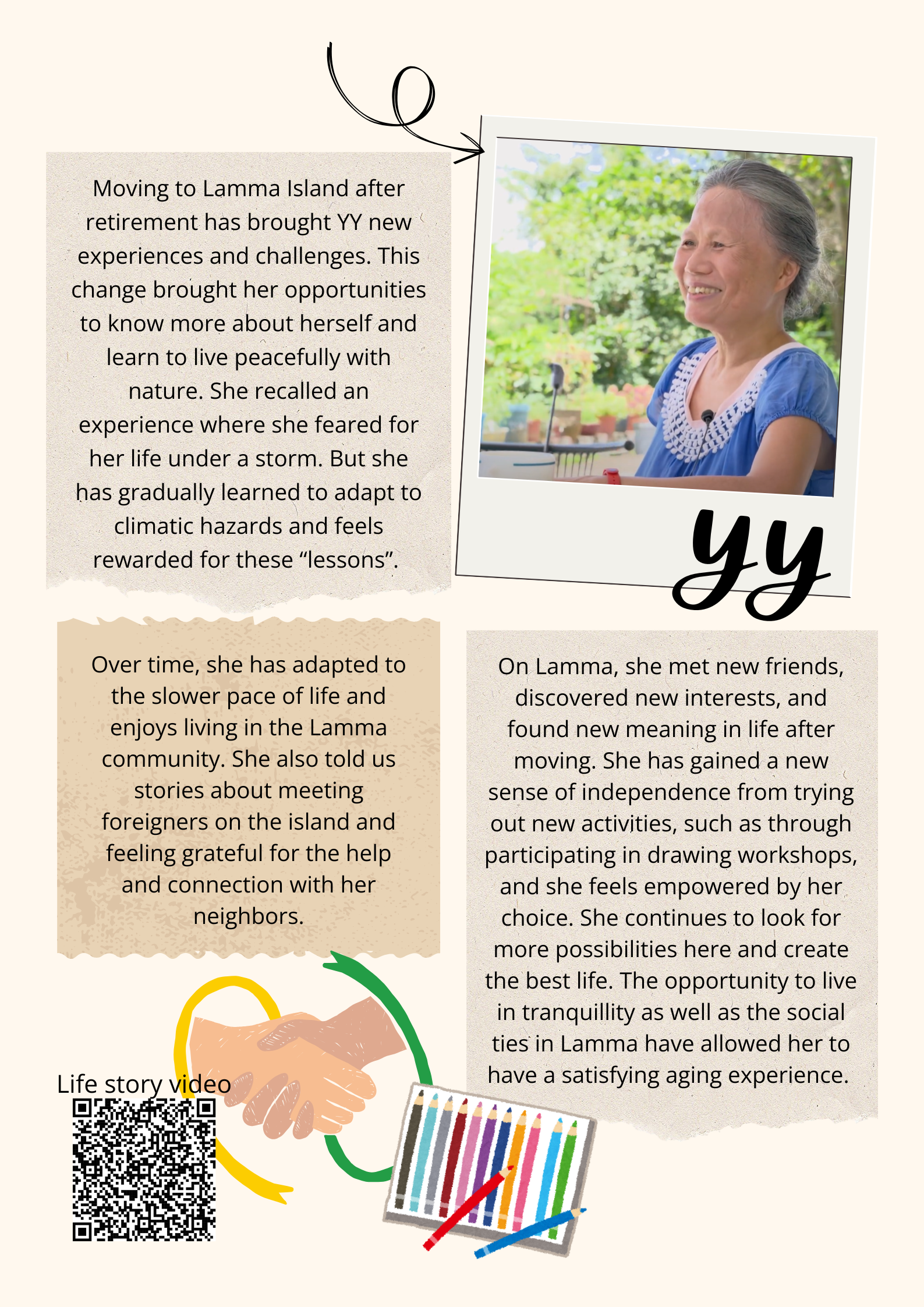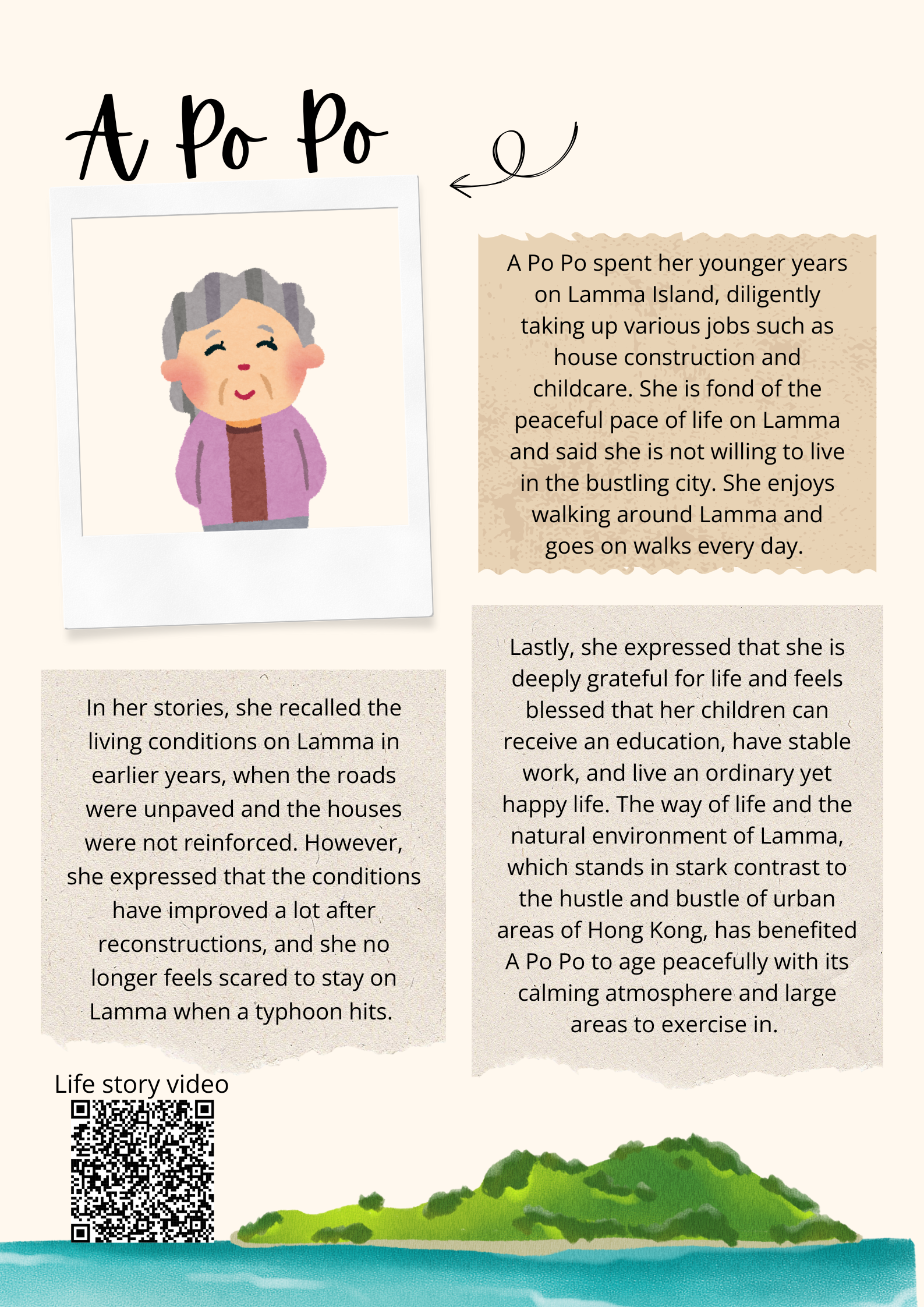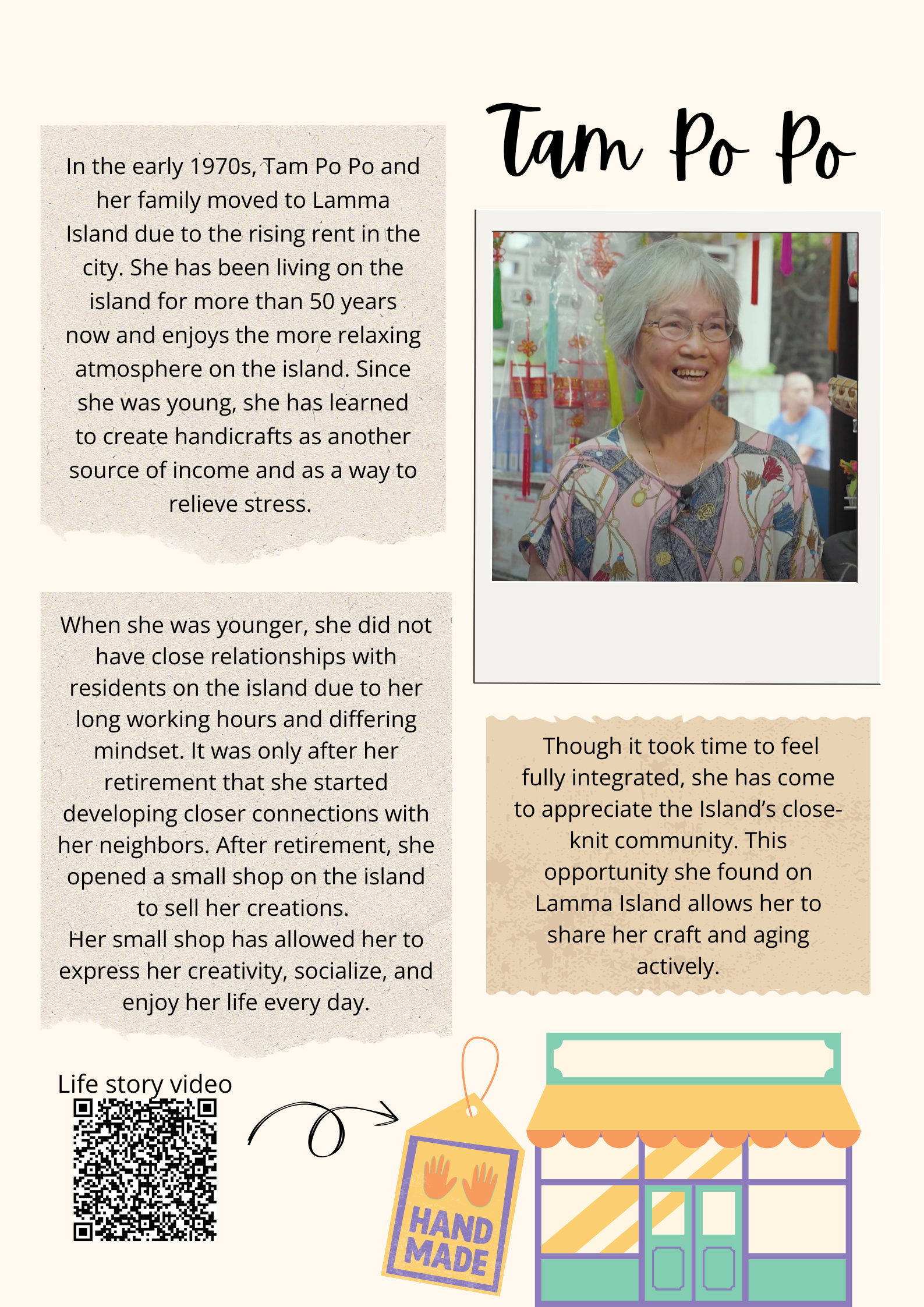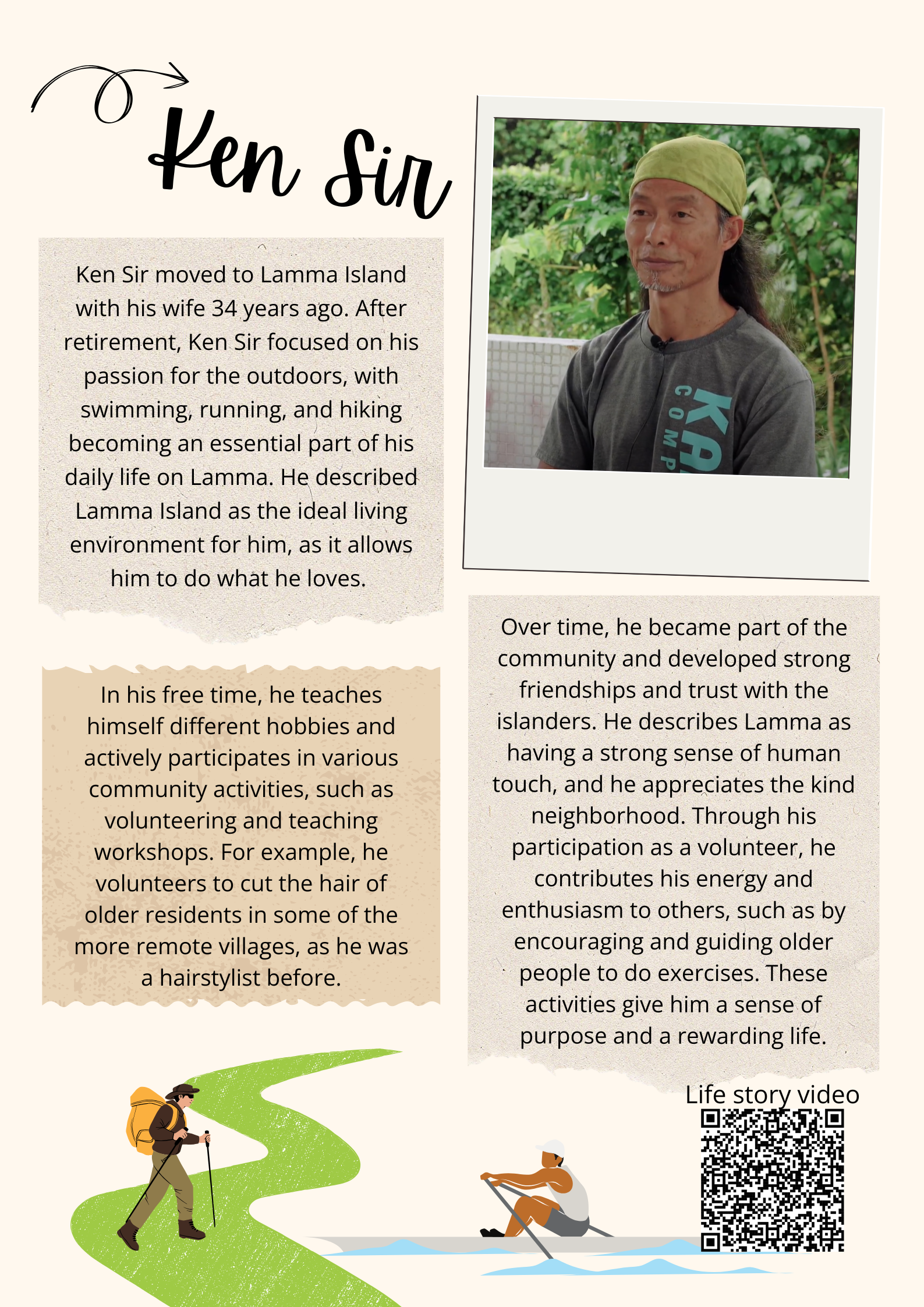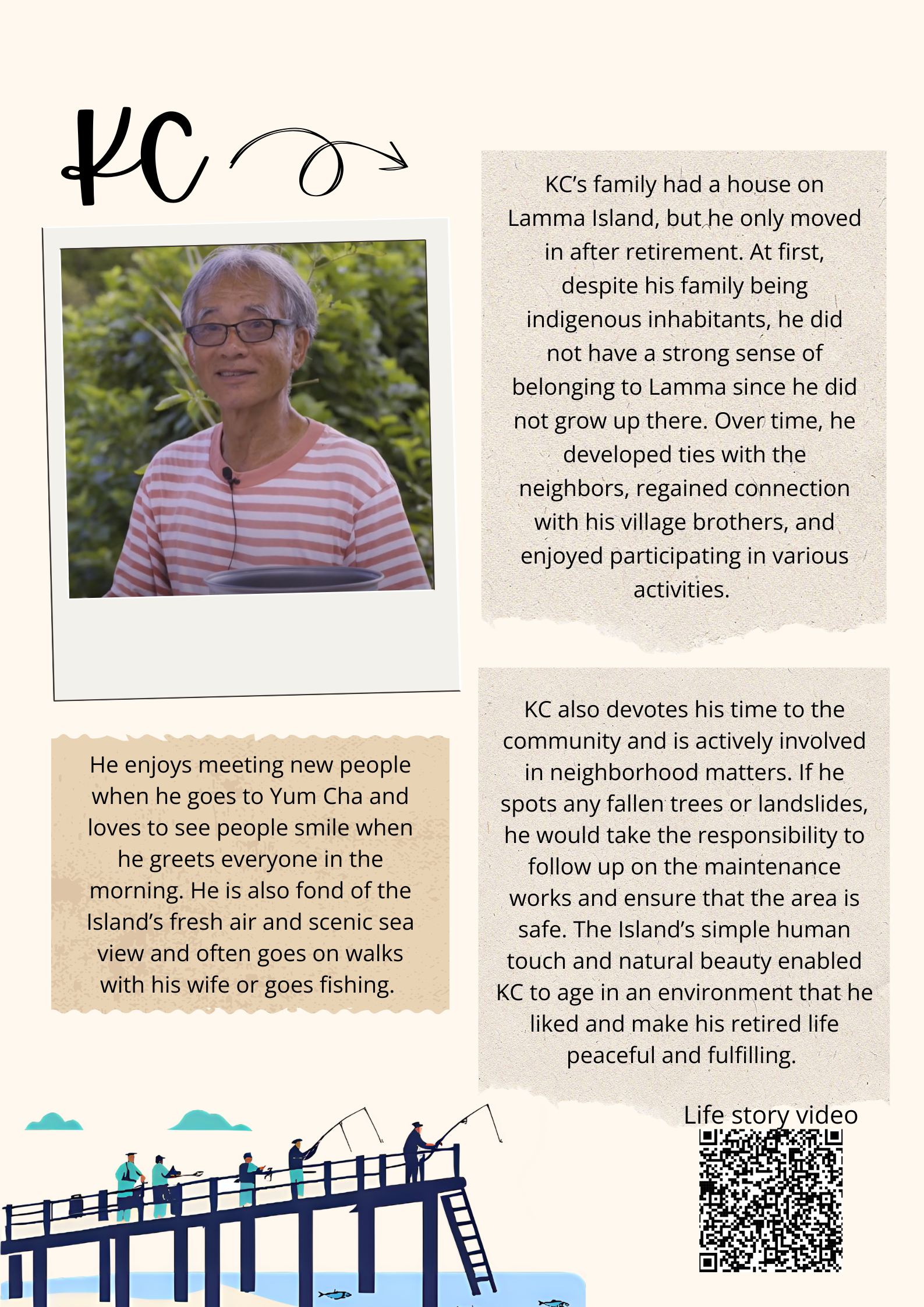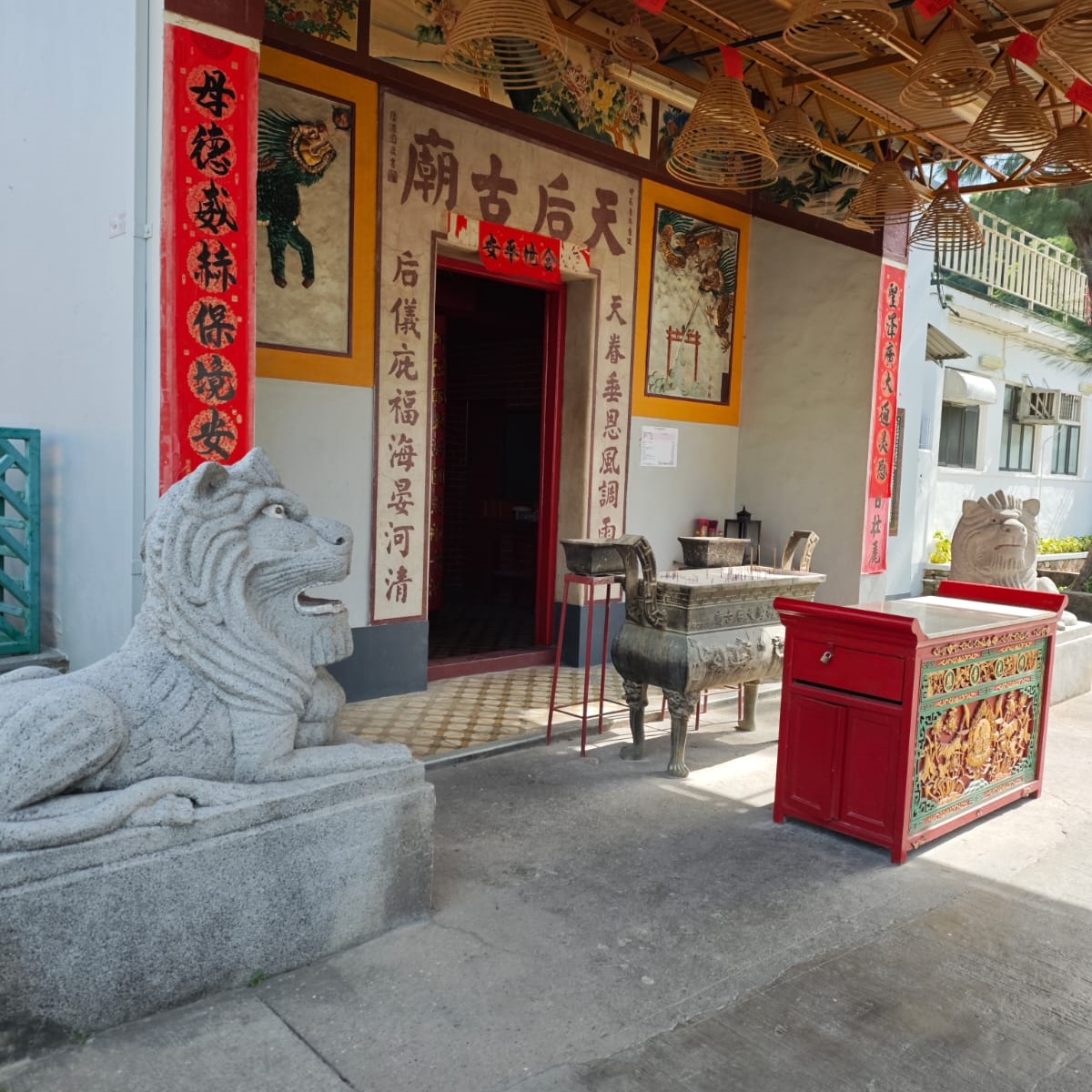 |
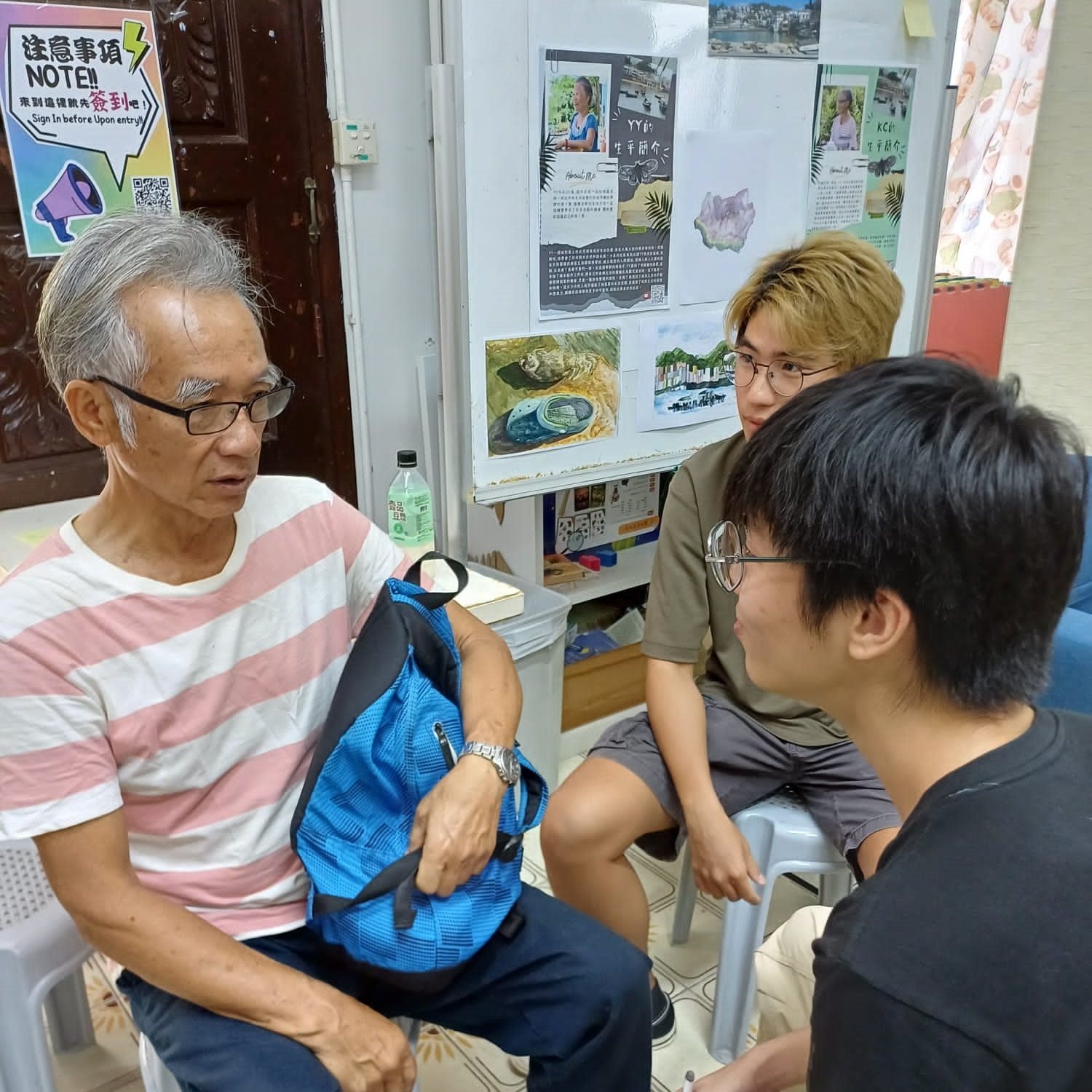 |
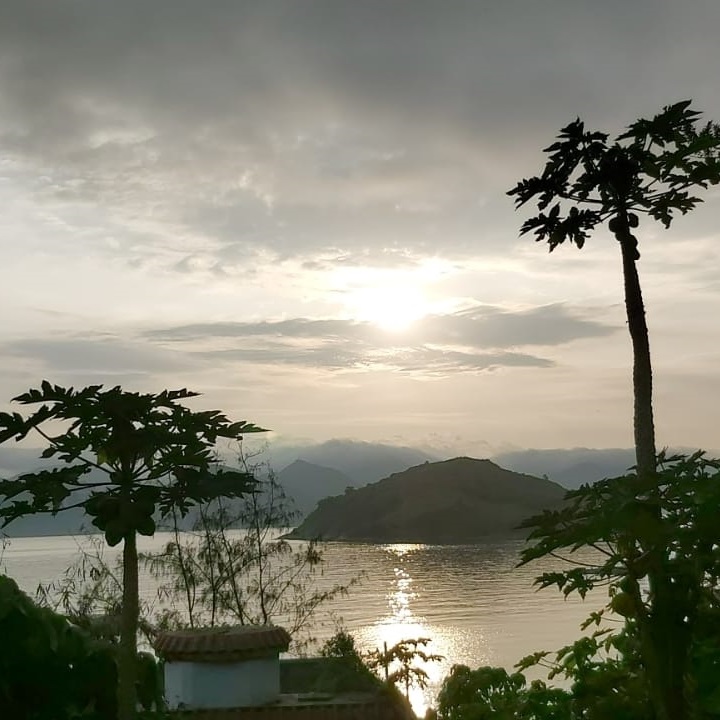 |
Rural sociology examines how communities in rural areas function, focusing on social structures, economic activities, relationships, and the challenges unique to these settings (Jaffe & Gertler, 2017). Rural communities are often tightly knit, with strong social bonds and shared values that foster a sense of belonging. These communities rely heavily on social capital, which involves the networks of trust and cooperation among residents built through frequent interactions within the community (Falk & Kilpatrick, 2000). There are three types of social capital: bonding, bridging, and linking social capital (Putnam, 2000; Chan, 2018). Bonding social capital refers to strong ties within homogeneous groups, such as family and close-knit communities, characterized by high levels of trust, loyalty, and mutual support which provides older adults with emotional and practical support through strong relationships (Putnam, 2000). Bridging social capital refers to connections between diverse groups, such as friendships across different ages, ethnicities, or social backgrounds, that provide access to broader networks outside their immediate circle with new resources and opportunities (Putnam, 2000). Lastly, linking social capital pertains to the connections between individuals or groups and those in positions of power or resources, such as government agencies and non-governmental organizations, which enable access to institutional support and resources (Chan, 2018).
This strong community bonding can lead to collective action and resilience in times of need. However, rural areas also face distinct challenges, including limited access to essential services such as healthcare, education, and transportation. Additionally, rural communities face influence from rural-urban linkages through economic, social, and cultural exchanges (Jaffe & Gertler, 2017). Understanding these dynamics is essential for addressing social issues and enhancing community resilience in rural environments.
Lamma Island from a Rural Sociological Perspective
Rural-urban connection in Hong Kong
In Hong Kong, rural areas are geographically close to urban centers, making the urban-rural connection particularly significant. Residents frequently travel between rural and urban spaces for work, healthcare, and social activities. This dynamic interaction implies that changes in urban policies, infrastructure, and economies have direct impacts on rural communities, such as shaping the migration patterns and commutes between urban and rural areas. For example, Tam Po Po and her family moved to Lamma Island due to the high rent in the city.
Residents’ activities and social capital
In the tightly knitted community on Lamma Island, each resident’s participation in social activities fosters the accumulation and creation of social capital. Their activities mainly contribute to the development of bridging social capital since the events connect residents outside of their immediate social circle (Chan, 2018). For example, Ken Sir participates in a water sports club that consists of both locals and foreigners. Their regular meetings would create bonding within the group, bridging the Western community and local populace.
Moreover, Ken Sir also participates in volunteer work. His enthusiasm strengthens the connection between residents and provides assistance or resources for those in need, especially older residents.
On the other hand, KC is also an active resident. He regularly greets people that he meets every day and is passionate about connecting with other residents. He shared with us that he got to reconnect or meet a lot of his village members because he often goes to Yum Cha.
Such interaction allows KC to access additional ties and have a larger network of weak ties that could potentially lead to extra resources (Teilmann, 2012). From the experience shared by interviewees, we could see that the social activities on Lamma Island create and sustain a network of support among the residents.
The social capital developed is valuable especially on Lamma Island due to the unique challenges of living on the island. The resources are more scarce and the supply of water and electricity is relatively unstable, so residents need to rely on one another in times of need. For example, YY shared her experience when she needed to ask for her neighbor’s help when the water supply was out of service.
Through the weak ties developed in daily interactions, YY was able to obtain resources in times of need, showing the importance of social capital in the rural context.
Informal conversations
Although the close-knit community creates an important circle of support for the residents, the close relationships could be a double-edged sword. In our interviews, it was found that while informal conversations in tight networks help spread information quickly and provide emotional support, they also create an environment where rumors and gossip spread easily.
This can lead to social pressure and anxiety, particularly for older residents. Our interviewees have expressed concerns about having frequent chats with others since they are afraid to get involved in gossip and rumors.
Diversification of the community and the aging population
Similar to other traditional communities in Hong Kong, Lamma Island Indigenous inhabitants of the same lineage and clan often live in the same village (Chan, 1998). From our interviews, in the 1970s, the big families of Indigenous inhabitants were more conservative and did not hold a welcoming attitude towards “zaap sing yan” (雜姓人), which means people that do not belong to any Indigenous clan, to live on Lamma. There is some distance between those who moved from urban areas and those who had bloodline relationships from the villages there. Therefore, when Tam Po Po moved from the city to Lamma Island, she did not feel integrated and held some distance from the original residents.
However, according to her sharing, as the island started to develop, especially due to the establishment of the power station, many foreigners and people from the city visited and moved there. The relatively lower rent of the newly built houses constructed by younger generations of Indigenous inhabitants also attracted people to move to Lamma Island. The population started to diversify and the community started to include and accept people of other surnames and ethnicities. Tam Po Po also shared that foreigners like living on Lamma Island because of the quieter lifestyle and the natural environment suitable for keeping pets.
Another phenomenon on Lamma is the aging population. Although Lamma Island might be an ideal living place for some older residents and foreigners, the local youngsters might not feel the same way. Tam Po Po talked about how many of the younger people moved to the city for various reasons, including better education and job opportunities, more diversified education for their children, and less commuting time.
To conclude, the population of Lamma Island is aging since many younger people move out, but it also contains a greater proportion of newcomers and foreigners.
- Chan, C. W. (2018). The Mental Health of Unemployed and Socially Isolated Middle-aged Men in Tin Shui Wai, Hong Kong. PhD thesis, University of Essex. https://repository.essex.ac.uk/21556/
- Chan, S. C. (1998). Politicizing tradition: The identity of indigenous inhabitants in Hong Kong. Ethnology, 37(1), 39-54. https://doi.org/10.2307/3773847
- Falk, I., & Kilpatrick, S. (2000). What is social capital? A study of interaction in a rural community. Sociologia ruralis, 40(1), 87-110. https://doi.org/10.1111/1467-9523.00133
- Jaffe, J., & Gertler, M. (2017). Rural Sociology. In K. O. Korgen (Ed.), The Cambridge Handbook of Sociology: Core Areas in Sociology and the Development of the Discipline (pp. 435– 444). Cambridge: Cambridge University Press. https://doi.org/10.1017/9781316418376.044
- Putnam, R. D. (2000). Bowling alone: The collapse and revival of American community. New York: Touchstone.
- Teilmann, K. (2012). Measuring social capital accumulation in rural development. Journal of Rural Studies, 28(4), 458-465. https://doi.org/10.1016/j.jrurstud.2012.10.002
Aging in place (AIP) generally refers to empowering older people to live independently in their original community as they age rather than in institutional care. It is a popular concept adopted in current aging policies because it is a less costly alternative to institutionalized care. It also aligns with older people’s increasing preferences for independence in their own homes or communities (Wiles et al., 2011). The capacity for AIP is influenced by various factors, including the living environment, available facilities, and community support (Gallagher et al., 2007). Ideally, older people should be able to maintain an active social role, such as being a volunteer or community member, to gain a sense of belonging, self-esteem, and satisfaction. Age-friendly cities and communities enable older people to do what they value through improvements across eight domains: 1) Outdoor spaces and buildings, 2) Transportation, 3) Housing, 4) Respect and social inclusion, 5) Social participation, 6) Civic participation and employment opportunities, 7) Communication and information, 8) Community support and health services.
Moreover, two sociological theories below help us understand the importance of aging independently and actively:
| Activity Theory | This theory suggests that staying active physically, socially, and mentally leads to higher life satisfaction in older adults. Engagement in social activities, fitness programs and learning opportunities helps older individuals maintain their well-being and sense of purpose (Havighurst & Albrecht, 1953). |
| Subculture of Aging Theory | This theory concerns group dynamics and identity. It suggests that disengaged elders who develop new patterns of interaction with peers who share common backgrounds and interests may acquire a new identity after developing group consciousness (Rose, 1962). |
Aging in Place on Lamma Island
Life on Lamma Island presents both challenges and rewards for its residents. According to the life stories of our interviewees, the island’s mountainous environment requires individuals to adapt to limited transportation options, steep walking routes, and occasional disruptions in utilities. YY, for example, shared her experience of coping with unstable water and electricity supplies,
noting the importance of self-reliance in overcoming these difficulties. Similarly, KC pointed out the lack of streetlights and rough stairways that made their day-to-day movement more dangerous and difficult.
Those problems also hindered KC’s ability to join social activities at night. Moreover, Tam Po Po pointed out the higher cost of groceries on Lamma and the need to travel to Aberdeen for better options and lower prices.
These inconveniences caused by Lamma Island’s rural environment and remote location have created various obstacles for older residents.
However, despite these obstacles, many residents have embraced Lamma’s unique lifestyle, learned to adapt to the environment, and developed a strong sense of belonging. For most residents, the quiet life close to nature is the reason why they chose Lamma over the city, but an active lifestyle is also appreciated. Ken Sir, for instance, enjoys cycling, swimming, and water sports, so Lamma Island is an ideal living place for him as he ages.
Even though not all residents enjoy active sports as much as Ken Sir, all of them go on regular walks. A Po Po has shared that she wakes up early every day to stroll around the island.
Another key aspect of life is community engagement, many residents participate in social activities, such as Ken Sir’s volunteer work in teaching Tai Chi and providing haircuts to elderly neighbors
and Tam Po Po’s civil participation in her store.
YY and A Po Po also emphasize the importance of support from neighbors, recalling instances where they received help from others in times of need.
To conclude, on Lamma Island, the natural environment and community-based lifestyle encourage older adults to stay physically and socially active. This case study has shown that although Lamma Island is a rural coastal region in Hong Kong, it has not only created barriers for older people but instead provided many opportunities for them to age successfully and actively in place, which is contrary to the common belief that aging in rural areas means worse living conditions. The resilience of older residents in adapting to challenges is admirable, and we should not neglect their willingness to age independently and fruitfully. It reminds us that we should improve the living conditions of older adults while promoting their capability to age independently.
- Gallagher, E., Menec, D. V., & Keefe, D. J. (2007). Age-friendly rural and remote communities: A guide. Federal/Provincial/Territorial Ministers Responsible for Seniors. https://www.phac-aspc.gc.ca/seniors-aines/alt-formats/pdf/publications/public/healthy-sante/age_friendly_rural/AFRRC_en.pdf
- Havighurst, R. J., & Albrecht, R. (1953). Older people. Longmans, Green, New York.
- Rose, A. M. (1962). The subculture of the aging: A topic for sociological research. The gerontologist, 2(3), 123-127. https://doi.org/10.1093/geront/2.3.123
- Wiles, J. L., Leibing, A., Guberman, N., Reeve, J., & Allen, R. E. (2012). The Meaning of “Aging in Place” to Older People. The Gerontologist, 52(3), 357-366. https://doi.org/10.1093/geront/gnr098
Lamma Island is located approximately 3 km off the southwest coast of Hong Kong Island and is the third-largest outlying island in Hong Kong. According to the 2021 Census, the total population of Lamma Island is 6724, with a median age of 46. Older people, age 65 or above, made up 11.2% of the population. Most residents live in Yung Shue Wan, located in the north, or Sok Kwu Wan, situated in the middle of the island. The southern part of Lamma is more sparsely populated, with small communities in Tung O and Yung Shue Long.
Unlike other parts of Hong Kong, Lamma has no large housing estates or public housing; instead, most residents live in village houses built along the hills, some with small shops on the ground floor. There are no large-scale economic activities on the island.
Navigating Lamma
There are no motorized public transport options on the island, so getting around the hilly roads of Lamma Island can be physically demanding. For example, the popular hiking trail between Yung Shue Wan and Sok Kwu Wan, which connects the island’s two main villages, spans approximately 5 km and takes about 1.5 to 2 hours to walk. The hilly terrain can pose challenges, especially for older residents or those with mobility difficulties.
Transportation dilemma
There are ferry services connecting Lamma Island to Central and Aberdeen. However, the cost of ferry services can be a financial burden for daily commuters, especially for residents living farther away from the major piers. For instance, private boat services connecting Lo Tik Wan and Aberdeen cost $250 for a 4-person boat and $450 for a 13-person boat. Moreover, not all villages on the Island have access to direct connections with Hong Kong Island. One instance is that residents living near Tung O Village need to walk for more than 30 minutes to reach Sok Kwu Wan Pier to get to Hong Kong Island by ferry. The lack of transportation options would be extra challenging for residents living in more remote villages.
Economic activities on Lamma Island
| Agricultural work | Before the establishment of the Lamma Power Station, farming was the major economic activity on the island (Au et al., 2017). Most people farmed and they would sell their produce to make money. A Po Po shared with us that when she first moved to Lamma, she did not know how to farm. But she learned to grow vegetables for self-consumption and for selling. |
| Construction work | There was no large-scale industrial activity on Lamma Island, but there was still demand for construction workers. A Po Po shared that she shifted to work on construction sites and she was responsible for moving construction materials for building houses. |
| Domestic work | A lot of residents of Lamma Island worked in the city for better job opportunities. So, A Po Po started to assist in people’s housework and took care of children. She gained a good reputation for her hard work and was recommended to other residents by her clients. |
| Retail | Tam Po Po currently owns a shop on Lamma, where one side of it is a stall and the other is her arts and crafts shop. Her daughter operates the stall while she creates handicrafts for sale.
Before she owned a shop, she sold her crafts and her brother’s products in a weekend street stall and her main customer group was the Japanese people who visited the island when the power station opened. |
- Au, C. K., Pang, S. M. & Tam, K. M (2017). Nanyadaoren shuogushi [Lamma Island Residents Tell Stories]. The Lord Wilson Heritage Trust.
| A | Tam Po Po sold handcrafts and glass paintings near the Lamma Island Rural Committee |
| B | YY joined the creation of the picture book of the Hans Andersen Club |
| C | Ken Sir volunteered to cut hair for older residents living in Sok Kwu Wan |
| D | A Po Po taking a stroll around the library, the ball court, and the pier every day |
| E | KC fishing at the pier |


